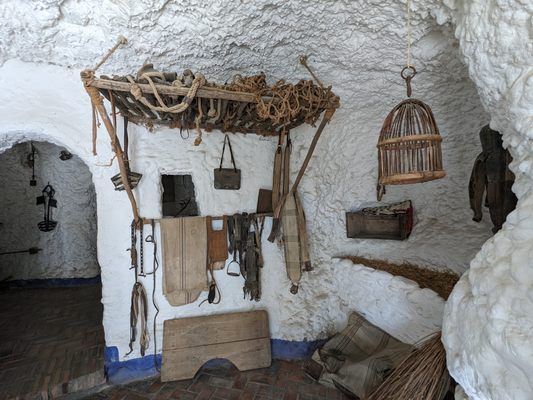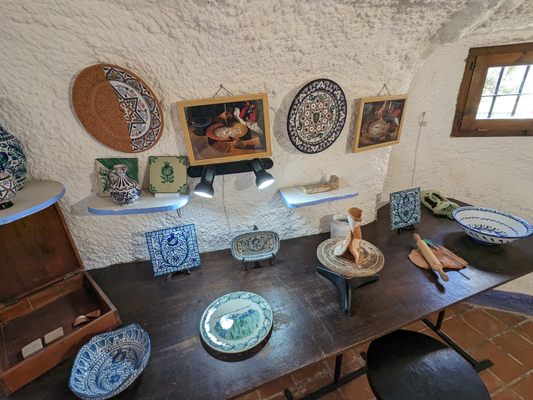About
After the reconquest of Muslim Spain by the Catholic monarchs Isabella and Ferdinand, a group of Romani people began to settle on the outskirts of Granada outside the city walls. They were eventually joined by other marginalized communities, including Muslim and Jewish populations expelled from their homes in Granada and formerly enslaved persons of African descent.
Starting in the 16th century, the people of the Sacromonte neighborhood began to build their houses by carving them out of the hills and occupying the resulting caves. These became the traditional homes in Sacromonte, extending into the modern era.
By the 1960s, more than 1,500 caves were in use as homes. The caves could be simple or elaborate, with different rooms being applied for different purposes. It was not only people that lived in the caves—separate caves were used as stables houses for horses, donkeys, chickens, and other animals, along with their feed and equipment. The caves and the community centered around them also became a place where traditional Romani dances survived, including Flamenco and the Zambra.
The Museo Cuevas del Sacromonte opened in 2002 and works to preserve examples of cave houses and the culture of the people who lived in them. It features eleven caves, including a traditional dwelling, a kitchen, a stable, and caves showing examples of handicrafts practiced in the caves such as pottery, weaving, and blacksmithing. The museum also compares the Sacromonte caves to similar dwellings from across the world.
Related Tags
Know Before You Go
Reaching the museum requires a walk uphill but signs point the way. The Sacromonte neighborhood is reachable by bus or taxi. Entry is 5€ and signs are in Spanish and English.
Community Contributors
Added By
Published
March 21, 2024







































